A Brief Guide To Basic Soil Types
Good gardeners know that the success you have in your garden will depend on knowing what you are dealing with when it comes to environmental conditions – that includes understanding the soil in which you are trying to grow your plants. The main types of soil are chalk, sand, silt, clay or peat based – often a mixture of more than one of these elements. A loam is an even mixture of sand, silt and clay and is the easiest soil type to work with when growing a garden. In all soil types, however, beautiful and productive gardens can be created. It is just a question of knowing, and working with, the soil type you have.
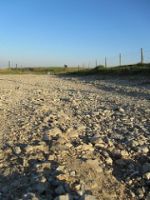 Chalk Soil
Chalk Soil
Chalk soil is dry and has an alkaline pH. You will see plenty of stones in the soil and it will be free draining. This is the sort of soil that lies above chalk or limestone bedrock. This sort of soil can be light or heavy depending on the area. Unfortunately, this type of soil will leach nutrients quickly but this can be combatted with the frequent application of organic fertilisers.
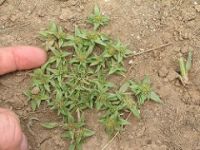 Sandy Soil
Sandy Soil
Sandy soil is free draining. As it is made up of larger particles of sand rather than silt or clay, it will feel gritty to the touch and if you roll a ball of moist sandy soil it will crumble apart very quickly. This soil is easy to work and warms up quickly in spring but dries out rapidly and will leach nutrients when it rains. Add plenty of organic matter to this type of soil and it will help to retain moisture and boost nutritional content.
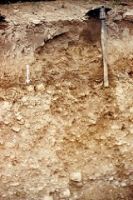 Silty Soil
Silty Soil
Silty soil has finer particles than sandy soil. It is possible to roll this sort of soil into a ball easily but it will not hold its shape as well as a ball made of clay soil. Silty soil can become compacted easily but it is higher in nutrients than sandy soil. It is also fairly free-draining and yet retains moisture more easily than sandy soils.
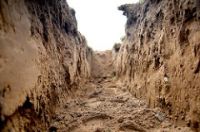 Clay Soil
Clay Soil
Clay soil is easy to recognise because it is slimy and easy to form into a ball which holds its shape when it is wet. Clay is slow to warm in the spring and cracks when it is dry. It can also easily become waterlogged and does not drain easily. Clay may be difficult to dig but it is also extremely high in nutrients.
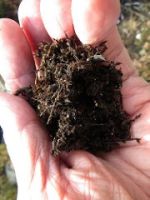 Peat Soil
Peat Soil
At the far end of the pH spectrum from chalk soil is peat soil – a type of soil that is rarely found in gardens. Peat is high in organic matter but low in nutrients. It can retain moisture and can get waterlogged but for ericaceous (acid loving) plants it can provide the perfect conditions.
A Perfect Loam
If you are lucky enough to have a perfect loam in your garden then you will have far more choice when it comes to what to grow and few, if any, soil related problems to overcome. It has all the benefits of the sandy, silty and clay soil types and yet none of the disadvantages. This is what we are aiming for when we amend other soil types.